

Celebrating Black History
Black history is being made each day throughout the St. Louis region by accomplished African Americans in the Science, Technology, Engineering and Mathematics fields. During Black History Month, the St. Louis American will be featuring individuals who are following the historic paths of great Black scientists, engineers, and educators and also paving a way for others with STEM interests who are destined for future accomplishments
Show Me STEM

Black Missourians celebrated for their contributions to the field
By Kenya Vaughn
The St. Louis American
Anyone who passed John McWhorter on a St. Louis street in 1914 would not have assumed him to be an aviation pioneer. He earned a living as a postal worker. But just like his father before him,
he made a life filled with invention and discovery.
He filed three patents for flying machines – one of them took off vertically with specs that resemble a helicopter, which was yet to be developed at the time of his patent.
He was one of many names an audience in the grand hall of the Missouri History Museum learned about during the Black Missourians in STEM presentation held Saturday morning.
Missouri History Museum K-12
Programs Manager Maria Russell started with McWhorter for a reason.
“There are some amazing and really famous Black scientists, architects and engineers that we want to remember,” Russell said. “But there are also some people we want to remember who didn’t
become famous.”
As she talked, an old black and white image of a young boy perched on a contraption with a man smiling off in the distance was displayed on a projector screen. Turns out the man in the image was McWhorter. The boy was sitting on one of his flying machines.
“They didn’t become famous, but they lived every day with curiosity and invention,” Russell said. “And spent their time learning and creating and discovering science, technology, engineering and math.”
As an icebreaker, Russell asked the audience to take one minute and think of as many names of Black scientists that they possibly could.
When the minute elapsed, she asked how many could name one. Hands shot up like rockets. She asked for three, about
Buzzing with Black History
Saturday story time honored Sumner educator and pioneering entomologist
By Kenya Vaughn The St. Louis American
As she heard the book being read about Charles Henry Turner, six-yearold Isla Smith’s eyes were as wide as her adorable afro puffs. With each new bit of information revealed in “Buzzing with Questions: The Inquisitive Mind of Charles Henry Turner,” her excitement became more palpable.
She was oblivious to the toddlers scooting around her as Dr. Naomi Msengi of Washington University turned the pages and read more about Turner’s life. For this week, the reading for the recurring story time segment at The Missouri History Museum reflected the theme of the full-day Black Missourians in STEM program that was underway on Saturday, February 15.
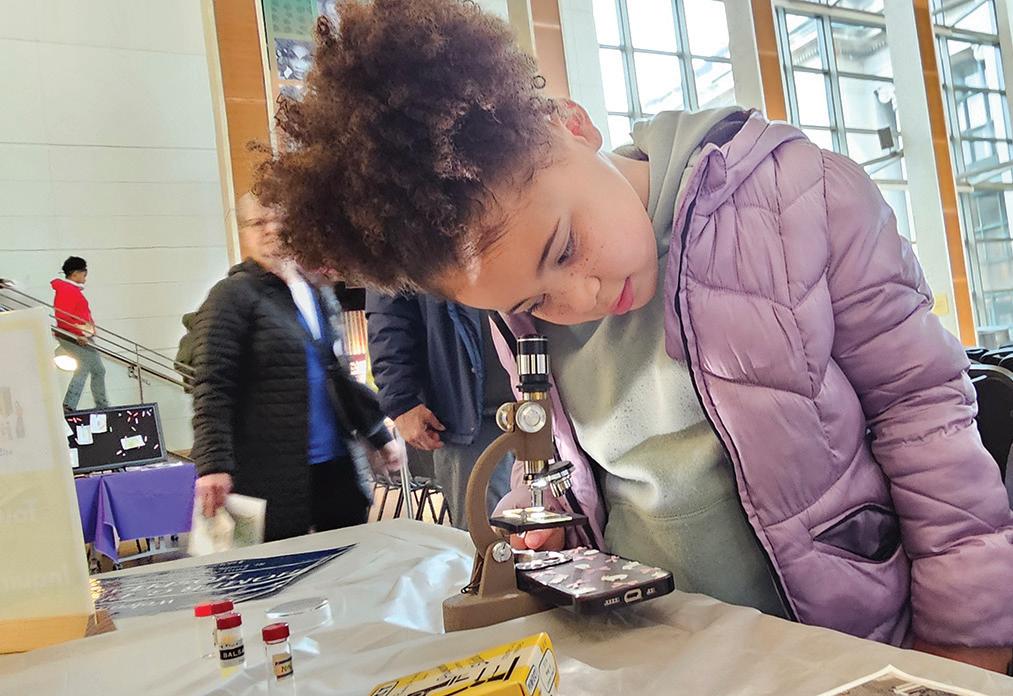
Six-year-old Isla Smith peered through a microscope at cicadas following Saturday morning story time on February 15 at The Missouri History Museum.
The first Black to receive a graduate degree from the University of Cincinnati and among the first to earn a PhD from the University of Chicago, Turner was also the first Black entomologist. He was a pioneer in the field thanks to his experiments to determine the cognitive abilities of arthropods, such as spiders and bees. He also examined different individuals within a species. His groundbreaking work was a precursor to the study of animal personality. And most of his experiments took place right here in St. Louis – where he spent most of his career as a science teacher at Sumner High School.
“It was the first Black high school built west of the Mississippi,” the pro-
gram facilitator told the children. “He taught science there – and his students helped him do experiments.”
Before Dr. Msengi read the book, the woman gave them a brief history lesson about him in a manner that was digestible for their young minds.
“He loved bugs – and I love bugs
See Museum, D3
half the hands went up in the room. One woman beamed with pride as she looked around and saw that her hand was the only one up when Russell called for five names. When Russell got to ten, everyone’s palms were facing the floor.
“There is a table back there with 28 Black Missourians involved in STEM,” Russell said. “If you could walk away remembering three people that you didn’t already know, I think that would be really cool.”
The talk was a fascinating roll call of Blacks from across the entire state – including the St. Louis region. Their contributions live on, even if their names have been forgotten. There was WPT Jones. He was born
Thurs., Feb. 20, 5 p.m., Thursday Nights at the Museum series by Washington University presents Black History Month: Joy, Arts, Community featuring 5 On Your Side Anchors Kelly Jackson and Brent Solomon in conversation about Black joy and the arts in the Gateway city with some of St. Louis’s groundbreaking leaders in dance, visual art, music, and writing. Missouri History Museum, 5700 Lindell Blvd. St, Louis, MO 63112. For more
Olive St. For more information, visit www.slpl.org.
Thurs., Feb. 20, 6 p.m. Histories Unbound: A Roundtable Discussion on Slavery In St. Louis Exhibit, St. Louis Public Library – Schlafly Branch, 225 N. Euclid. For more information, visit www.slpl.org.
Thurs., Feb. 20, 7 p.m., St. Louis County Library welcomes Orvin Kimbrough, author of “Twice Over a Man: A Fierce Memoir of an Orphan Boy Who Doggedly Determined a Finer Life,” St. Louis County Library – Clark Family Branch, 1640 St. Lindbergh. For more information, visit www.slcl.org.
Photo by Kenya Vaughn
See STEM, D2
Photo by Kenya Vaughn
Kirstan Riddle of the Missouri History Museum at a station devoted to Homer G. Phillips Hospital that paid tribute to the late Dr. James Whittico Jr. during their Black Missourians in STEM program on Saturday, Feb. 15.
Continued from D1
too,” she said.
“I love bugs too,” they repeated without prompting, Including Isla.
“He studied how bugs acted around each other –and around him,” she said. “We are going to learn about one of his experiments.”
They also learned about his life by way of Janice N. Harrington’s book.
“He never stopped asking questions,” Dr. Msengi read. “A classmate said he spent hours peering through microscopes, planning for experiments and gathering specimens.”
The book detailed a particular experiment where he concluded that insects could sense time and detect color.
“Even though he was a respected scientist, Charles faced racial prejudice,” Dr. Msengi read. “African Americans had to attend separate schools. And he lived in St. Louis during the terrible East St. Louis riots, when hateful mobs killed more than 100 African Americans, and burned their neighborhoods.”
It was the study of plants and animals that gave Turner hope.
“He hoped that biology could help people see the connections among all living things,” Dr. Msengi read. “Biology teaches us to think less of ourselves, and more of each other.”
The book described Turner as a devoted scholar who taught students to look closely to find the webs that connect us all.
“Just as he did,” Dr. Msengi said. “And to fill the world with questions.”
As soon as the story time was over, Isla made her way to the microscopes – the same as the book described Turner doing 140 years ago.
Kirstan Riddle presented her with slides of different insects to choose from.
“Do you have any grasshoppers,” Isla asked.
“I don’t, but I do have cicadas,” Riddle said.
She started to provide an explanation of what it was, but Isla made it clear that Riddle didn’t need to.
“Cool,” Isla exclaimed, before Riddle could go any further in her description.
Charles Henry Turner had to be looking down with a smile even bigger than Isla’s.
Celebrating Black History Month


Calendar
Continued from D1
Fri., Feb. 21, 7 p.m. St. Louis County Library welcomes Jennifer Jones, author of “Becoming Spectacular: The Rhythm of Resilience from the First African American Rockette,” St. Louis County Library –Clark Family Branch, 1640 St. Lindbergh. For more information, visit www. slcl.org.
Sat., Feb.,22, 9 a.m. –5:30 p.m., Motorcoach Tours (5) and Mudd’s Grove Open House. Wallace Ward narrates five tours of cemeteries, churches and schools that represent Kirkwood Black History. Kirkwood Community Center and Mudd’s Grove Tickets: Free Reservations Required for the historical bus tour due to limited capacity. https://tinyurl. com/4te89zya or by calling the Kirkwood Historical Society at (314) 965-5151.
Sat., Feb. 22, 3 p.m., Missouri Commission for the Deaf and Hard of Hearing presents Deaf Black History Month Celebration, Commerce Center located at 56 N Euclid Ave., St. Louis MO 63108. For more information, visit mcdhh.mo.gov
Sun., Feb. 23, 3 p.m., Gospel Community Choir of St. Louis presents Gospel Roots: A Black History Month Celebration, Friendly Tempel, 11221 Larimore Rd, St. Louis, MO. For more information, visit https://www.onthestage. tickets/show/community-gospel-choir-of-st-louis/678c13de602fca-
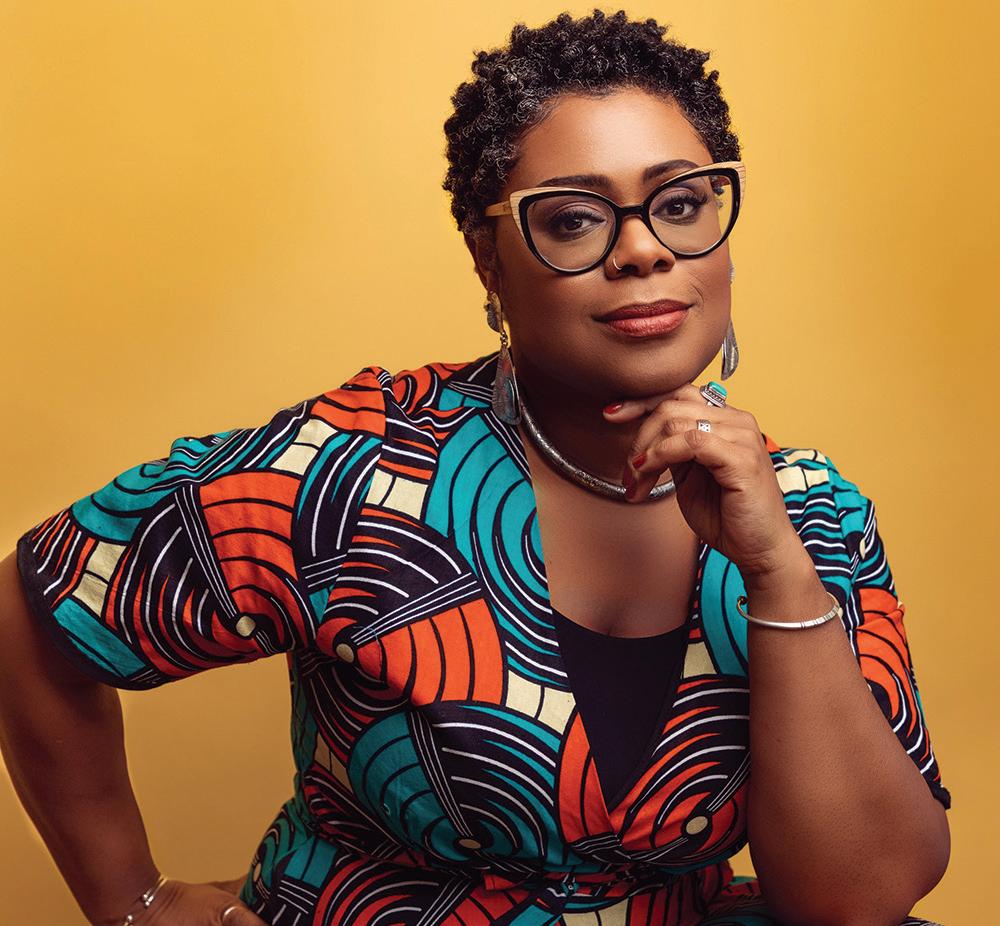
0f6a619481
Wed., Feb. 26, 7 p.m. St. Louis County Library welcomes Bestselling Young Adult author Ibi Zoboi, author of (S)kin,” St. Louis County Library –Clark Family Branch, 1640 St. Lindbergh. For more information, visit www. slcl.org.
Thurs., Feb. 20, 5 p.m., Thursday Nights at the Museum series by Washington University presents Navigating the Intersection of Race and Disability, Missouri History Museum, 5700 Lindell Blvd. St, Louis, MO 63112. For more information, visit https://mohistory.org.
Fri., Feb. 21, 8 p.m., The Sheldon presents Martha Redbone, Sheldon Concert Hall, 3648 Washington Blvd. For more information, visit thesheldon.org.
Sat., Feb. 22, 10 a.m.,
Author Talk: Black St. Louis by Nini Harris, Ulysses S. Grant National
Historic Site, 7400 Grant Rd, St. Louis, MO 63123. For reservations call 314842-1867 ext. 230 or visit www.nps.gov/ulsg.
Sat., Feb. 22, 11 a.m., St. Louis Civil War Sites and the Fight for Freedom with Peter Downs, This program is free with limited availability in person and on Zoom. Field House Museum, 634 S. Broadway, St. Louis, MO 63102. Reservations must be made in advance at: fieldhousemuseum. org/events, by calling the Museum at 314-421-4689, or by emailing info@fieldhousemuseum.org
Tues., Feb. 25, 9 a.m., Delmar Divine Presents: Black History is G.R.A.N.D., Celebrate Black History Month with Author & CEO Tina Grimes as she shares a book from her GRAND Anthology series featuring women leaders! Delmar DivINe, 5501 Delmar Boulevard St. Louis, MO 63112. For more information, visit
St. Louis County Library welcomes Bestselling Young Adult author Ibi Zoboi, author of (S)kin to the Clark Family Branch on Wednesday, Feb. 26.
Tues., Feb. 25, 6:15 p.m., 3rd Annual Black History Month Ride and Flow presented by Derrick Walker and Andrea Cox, celebrating Black History Month with powerful energy and movement, TruFusion Foundry, 3770 Foundry Way, #Suite 192 St. Louis, MO 63110. For more information, visit trufusion.com/foundry/
Thurs., Feb. 27, 5:30 p.m., St. Louis Public Library Black History Month Film Series, “Sorry to Bother You,” Auditorium, St. Louis Public Library – Central Branch, 1301 Olive St. For more information, visit www.slpl.org.
Fri., Feb. 28, 5 p.m., Triton Connect presents Black Excellence Fashion Show, UMSL Millennium Student Center - Century Room BC, 17 Arnold B Grobman Dr., St. Louis, MO 63121. For more information, visit tritonconnect.umsl.edu.



into slavery – but escaped through the Underground Railroad to Canada. While in Canada he attended medical school and became a physician. He arrived in St. Louis in the 1870s, he became the first known Black physician to practice here. When he left St. Louis, he became the first Black man to practice medicine in Denver.
“The National Science Foundation doesn’t consider medicine a STEM career, because it is about applied science and not about understanding the world,” said Russell. “We have medical professionals that we are covering. They are working a lot with science, understanding our bodies. They are also working a lot with different technologies, and they are inventing new things. So, I personally must disagree with the National Science Foundation.”
The event included an exploration station devoted to esteemed Black doctors – like Dr. James Whittico Jr., Dr. Helen Nash and her brother Dr. Homer Nash – and the global impact of Homer G. Phillips Hospital. She also discussed the legacy of ophthalmologist Dr. Howard Venable, the first Black physician faculty member at Washington University – who paid for medical school by touring as a trumpet player.
The Missourians who heard Russell’s lecture now know of the individuals in our state that changed the world with respect to STEM (science, technology, engineering and mathematics).
When Charles S. Baker and his family migrated from Savannah, Missouri to St. Joseph, one of the wheels on their wagon didn’t have enough oil. The friction caused heat, which produced steam when it began to rain. The
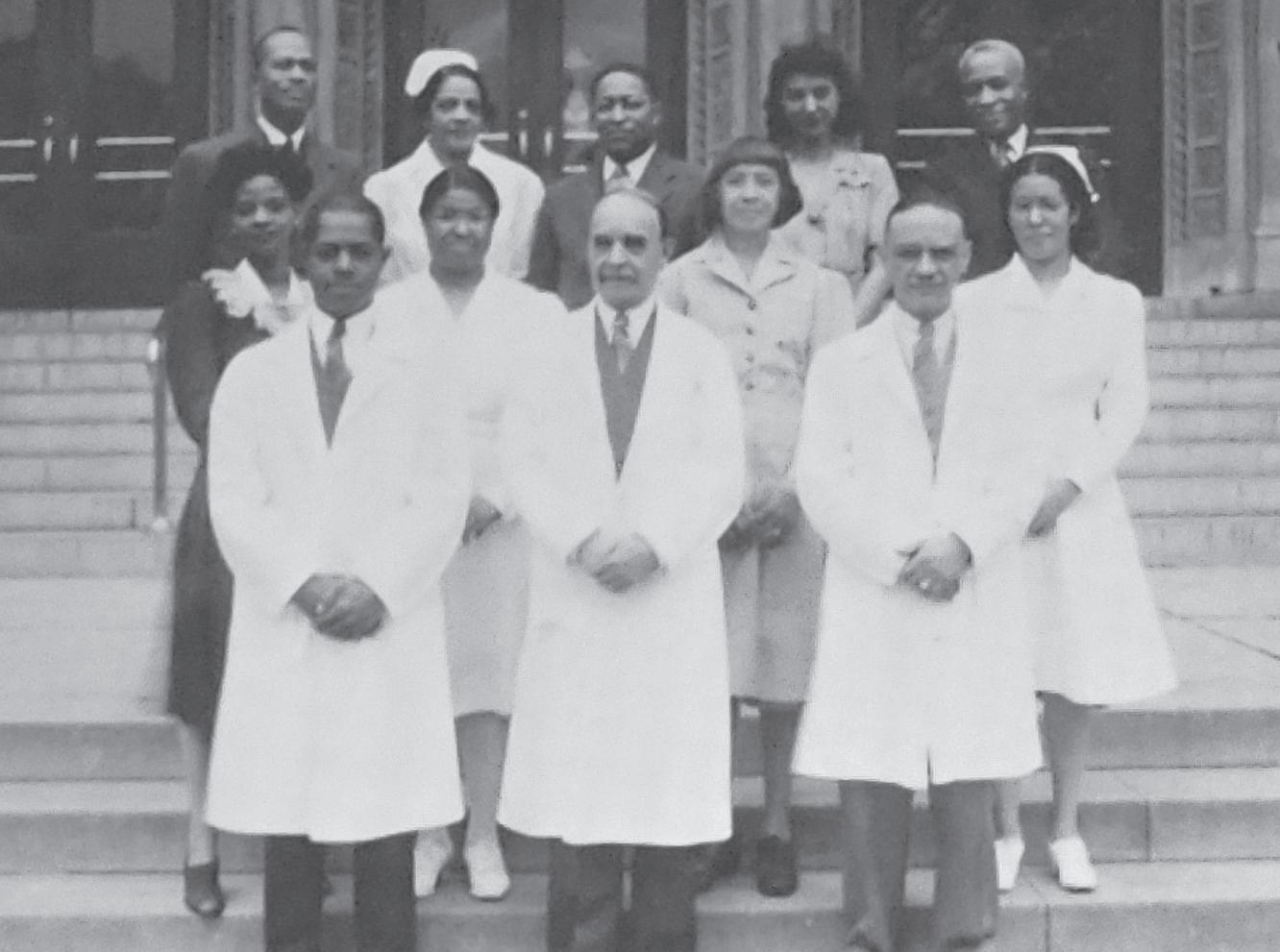
a place where goals could be accom-
a chance to succeed and prosper.
moment inspired Baker to create a radiator that used friction instead of combustion.
“He demonstrated his invention at a number of expositions and fairs around the country,” Russell said. “He started a company called the Baker Friction Heater Company. It was a successful company. He changed the name to the Baker Revolutionizing Super Heating Molecule Union Developing Company,
which is a mouthful.”
Tom Bass was a horse trainer from Mexico, MO. He grew up around horses, donkeys and mules, and he loved them. He wanted to take care of them. He wanted to make sure people could work with them – and be kind to them.
The bits that are used to control their motion can be hard and painful. He invented a bit that was designed to give the rider control, but without causing that pain.
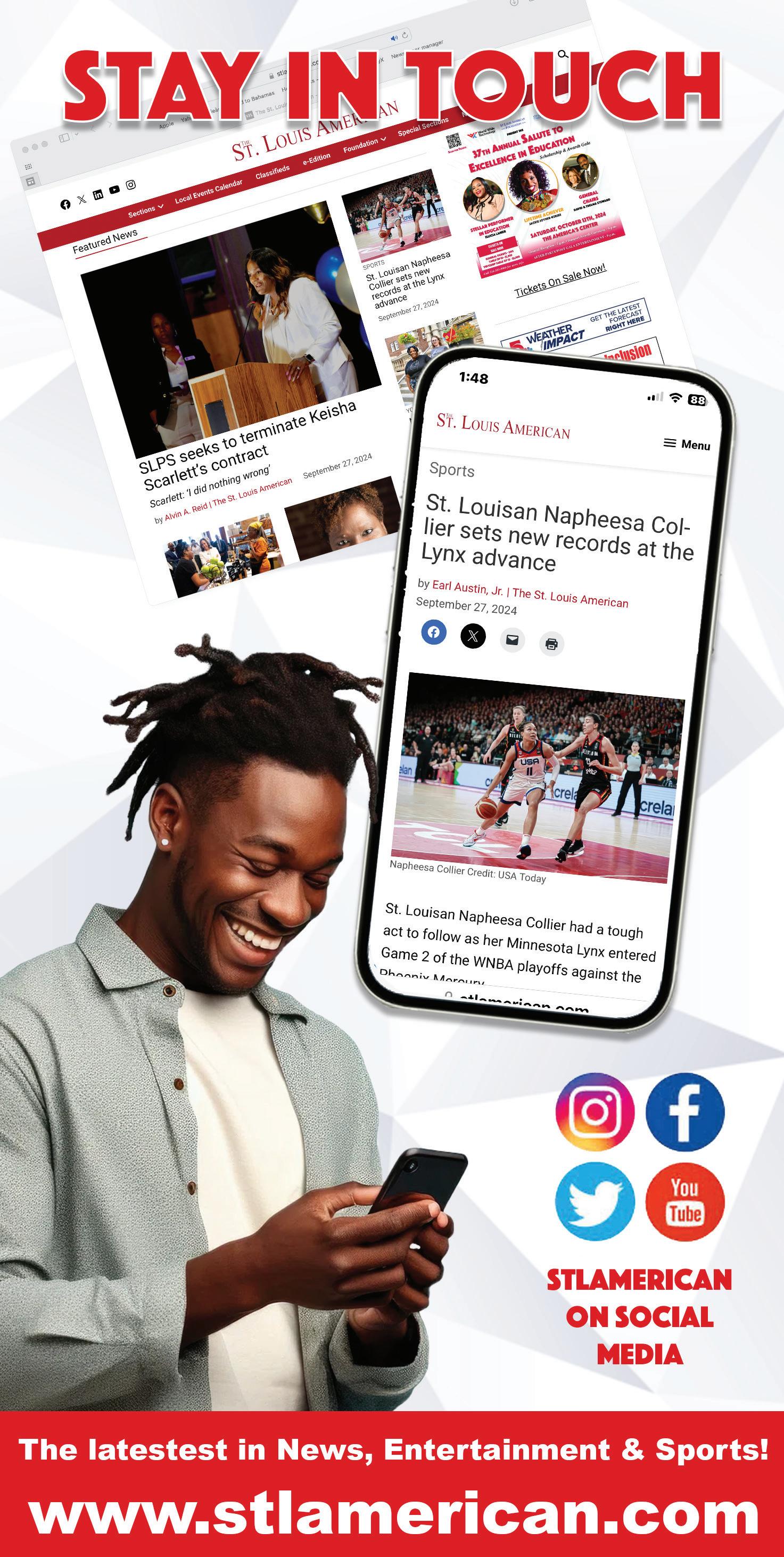
“The Bass bit is still used today,” Russell said.
“He never patented that design, which meant that he didn’t get exclusive rights to it and other people could make it without crediting him or paying him.”
Annie Malone was among the most recognizable names on Russell’s list, though Moddie Daniel Taylor might ring a bell. He was raised in St. Louis. He was a professor of chemistry at Lincoln

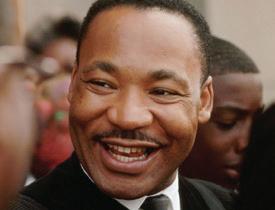
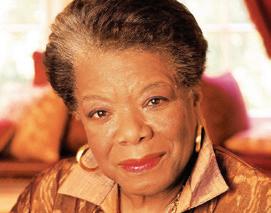
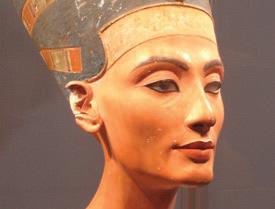
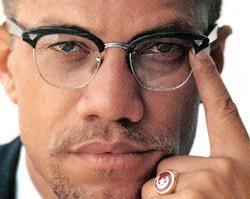
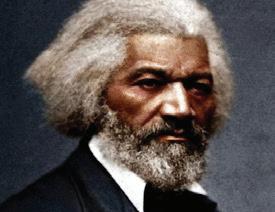


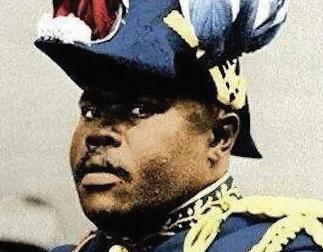
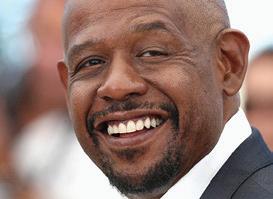
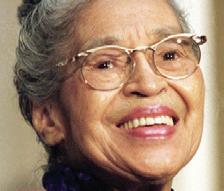


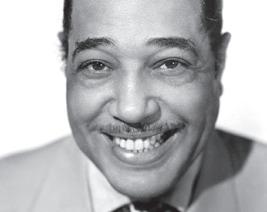






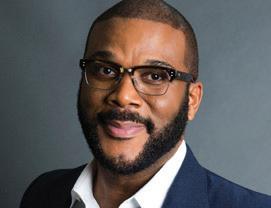
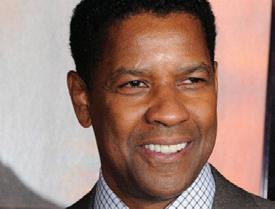
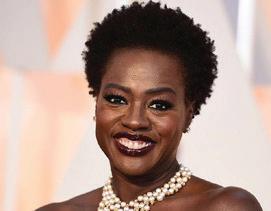
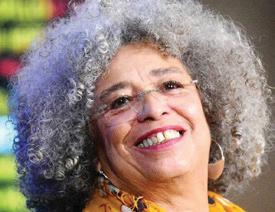

University when he was recruited to join The Manhattan Project in 1943.
“He specialized in rare earth minerals, which get used sometimes for nuclear physics and nuclear energy,” Russell said.
She brought up second-generation architect Francis Rassieur Roberson, who designed the visitor center under the Gateway Arch. St. Louis Housing Authority stationary engineer Ivan C. James Jr., software engineer and
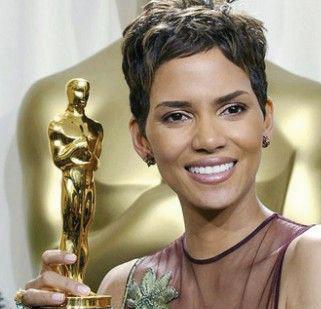

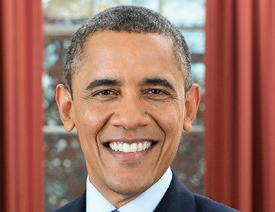



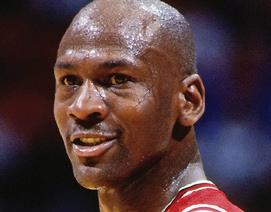
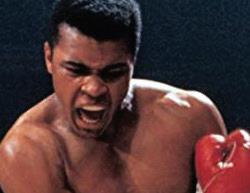
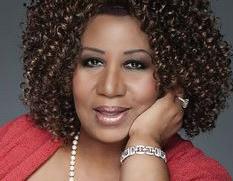
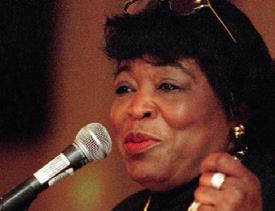
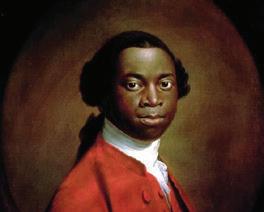
Kinloch native Roy Clay, who is often referred to as
“The Godfather of Silicon Valley” made the list too.
“When we do this work, we’re trying to get these names out to get more of them remembered –because a lot of them are forgotten,” Russell said.
“Most of history is lost. The only way to keep it is by working to remember and to find things to commemorate them.”
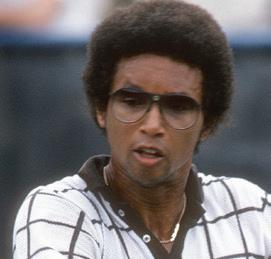
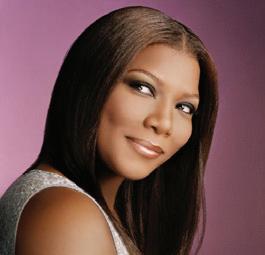
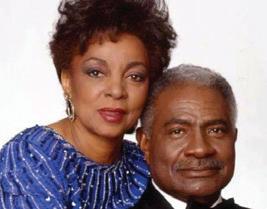

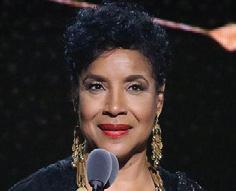
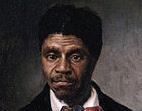
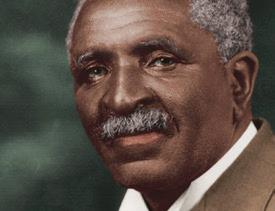

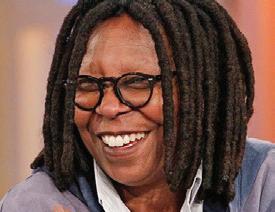
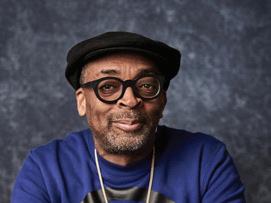
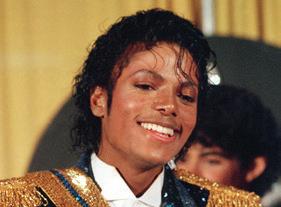


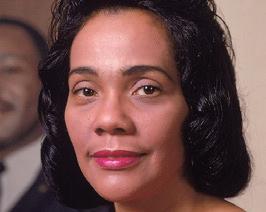
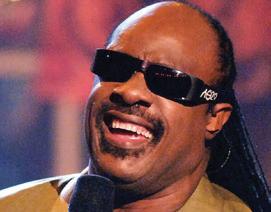


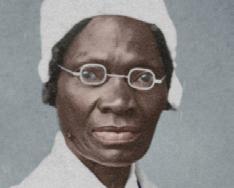
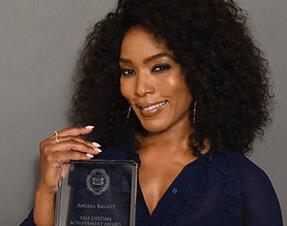

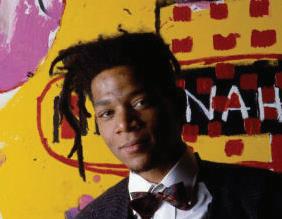
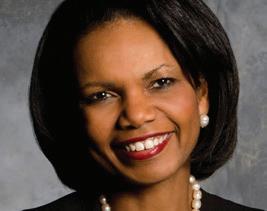
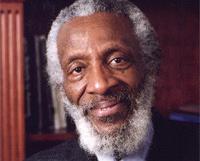
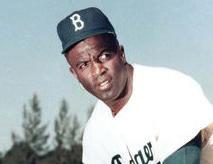
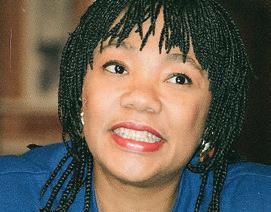

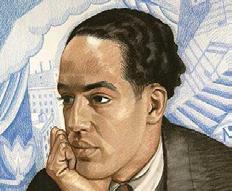
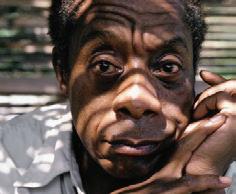
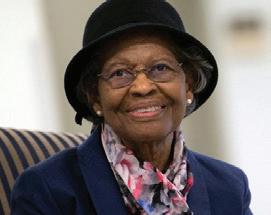
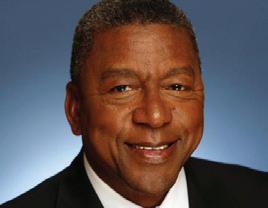


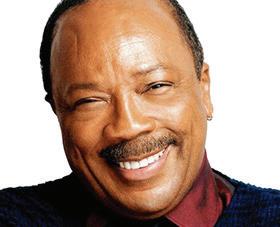

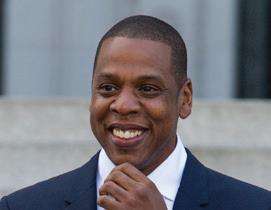
Photo courtesy of Missouri Historical Society
The Homer G Phillips Hospital opened in 1937. It was the only public hospital for Black St. Louisans until 1955. The hospital was also designed to be a training facility for Black doctors and nurses both nationally and internationally to complete their medical residences. By the early 60s, the hospital had trained the largest number of Black doctors and nurses in the world.
Homer G. Phillips Hospital was more than a hospital in the Black community. It was
plished, Black excellence was celebrated, and future Black professionals had
Black music is Black history

By Kenya Vaughn
The St. Louis American
The music of Grammy Award-winning gospel artist and songwriter Donald Lawrence is considered contemporary. But his songs speak to what it has meant to be Black in America since we arrived.
“When Sunday comes, my trouble’s gone,” the late great Daryl Coley sang on Lawrence’s “When Sunday Comes.” “As soon as it gets here, I’ll have a new song.”
The lyrics are much deeper than making it to church. It reflects our ability to endure, despite the unspeakable atrocities of systemic racial terror and orchestrated inequity.
Radical faith and defiant hope – which is apparently within the DNA of Black people – has carried us for centuries.
Lawrence will be the soloist for the 2025 St. Louis Symphony IN UNISON Chorus Lift
Every Voice: Celebrating Black History featuring the St. Louis Symphony Orchestra. The concert will
take place at 7:30 p.m. on Friday, February 28th at Stifel Theatre.
Hope is echoed in Lawrence’s music. So is self-determination.
“When we speak, we have to speak into our future,” Lawrence told podcaster Michah McLean in a 2023 interview.
“Words are very powerful – and they carry a spirit. The words we speak really set the tone for our lives.”
Lawrence has written, produced and performed with some of the biggest names in gospel over his 30-plus years in music.
Karen Clark Sheard, Kirk Franklin, Bishop Walter Hawkins, Vanessa Bell Armstrong, Coley, LaShun Pace, Donnie McClurkin, Hezekiah Walker, Richard Smallwood and Le’Andria Johnson are just a few. Hits like “The Best Is Yet to Come” and “The Blessing of Abraham” have become inspirational music anthems. “Music is a heart thing for me,” Lawrence told McLean.
“If I do what my heart dictates, it always hits and touches the people it is
Grammy-winning gospel artist Donald Lawrence will be the featured soloist for St. Louis Symphony IN UNISON Chorus on Friday, February 28th at Stifel Theatre.
Photo courtesy of St. Louis Symphony Orchestra
supposed to touch.”
One of Lawrence’s biggest hits is adjacent to the messages of “Lift Every Voice and Sing,” The Black National Anthem written by James Weldon Johnson 125 years ago –and the namesake of IN UNISON’s concert. The gospel staple “Encourage Yourself” with the TriCity Singers also reminds Black people of two of our most formidable superpowers – resilience and fortitude.
“Sometimes you have to encourage yourself,” soloist Sherri Jones-Moffitt sings in “Encourage Yourself.” “Sometimes you have to speak victory during the test.”
St. Louis Symphony IN UNISON Chorus will present Lift Every Voice: Celebrating Black History featuring Grammy-winning gospel artist Donald Lawrence at 7:30 p.m. on Friday, February 28 at Stifel Theatre, 1400 Market St. For more information, visit https://slso. org.

Legislation introduced for Rosa Parks Day federal holiday
December 1 could become first national observation in honor of a woman
Special to The American From Word In Black
At a press conference earlier this month, Reps. Terri Sewell, D-Ala., Joyce Beatty, D-Ohio, and Shomari Figures, D-Ala. introduced legislation to make Rosa Parks Day a federal holiday.
The Rosa Parks Day Act would designate Dec. 1 as a federal holiday marking Parks’ 1955 arrest in Montgomery, Alabama. She refused to give up her bus seat to a white passenger. Her arrest sparked the Montgomery Bus Boycott, a pivotal moment in the Civil Rights Movement.
“At a time when Black history is under attack, it is especially important that we recognize the bravery and heroism of changemakers like Rosa Parks who dared this nation to live up to its highest ideals,” Sewell said.
“Honoring Rosa Parks with a new federal holiday will ensure that her contributions to the Civil Rights Movement and to American history are never forgotten.”
While several states have adopted their own holidays honoring Parks, no federal holiday currently recognizes her contribution to the Civil Rights Movement. If established, Rosa Parks Day would become the first federal holiday to honor a woman.

“Nearly 70 years ago, Rosa Parks changed the course of history when she refused to give up her seat on a segregated bus in Montgomery,” Beatty said.
“On that day, she sparked a civil rights revolution, challenging our country to deliver on the principles we’re bound to — that all of us are created equal.”
Beatty, who championed Ohio becoming the first state to recognize Dec. 1 as Rosa Parks Day during her time as a state legislator, called for national recognition of “this esteemed American hero” through a new federal holiday.
Figures, a freshman representative whose district includes Montgomery and Parks’ birthplace of Tuskegee, supported the measure. “I am proud to join this legislation designating a national holiday in her honor to ensure her contributions that helped ignite the Civil Rights Movement are never forgotten,” he said.
“By honoring her with a new federal holiday, we can ensure that what hap-
pened in Montgomery and Selma and Birmingham is never ever erased or forgotten, no matter how hard some extremists may try,” Sewell said. “Moreover, it will become the first federal holiday to honor a woman, let alone a Black woman.
The bill was introduced on February 4, which would have been Parks’ 112th birthday.
Sewell says that the bill already has 57 cosponsors in the House.
“We look forward to harnessing this momentum to get it across the finish line, and it is our hope that we can do so in a bipartisan way,” Sewell said.
“Her quiet, distinguished courage set the stage for the historic Montgomery Bus Boycott and galvanized a movement that changed the very fabric of this nation.”
This article was reprinted with permission from Word In Black and originally published by The Washington Informer.


